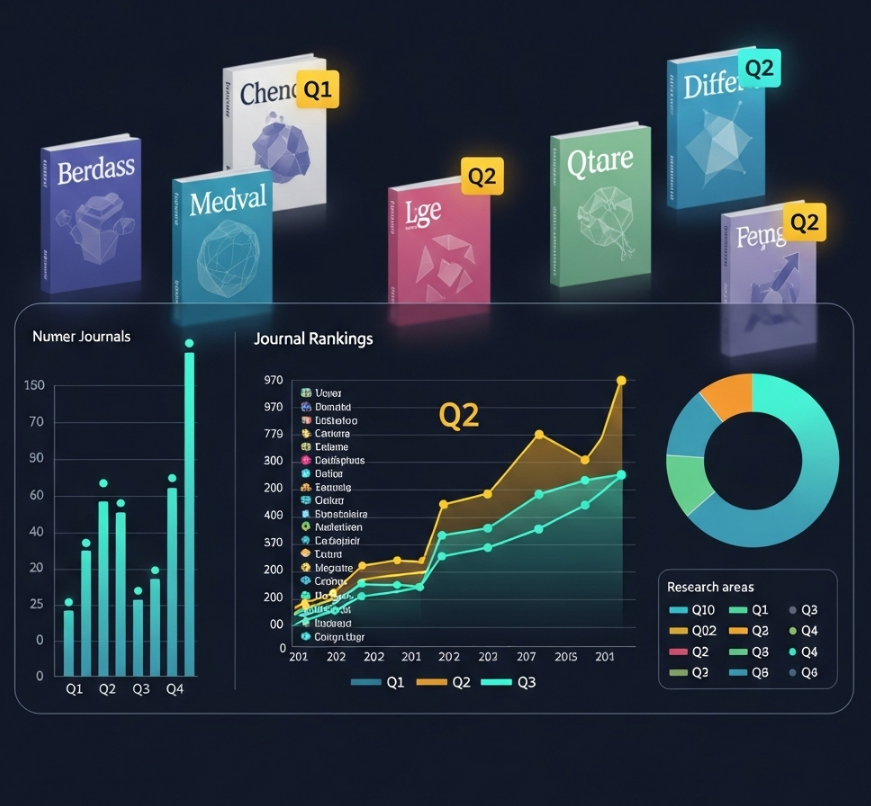For researchers, academics, and students, the acronyms SCI, SSCI, A&HCI, and EI represent the gold standard in scholarly literature indexing. Being published in a journal indexed by one of these databases is a significant achievement and a marker of quality. However, they are not interchangeable. Each index serves a different academic community and has a unique focus.

Understanding the key differences between them is essential for conducting literature reviews, selecting a journal for your manuscript, and navigating academic evaluations. This guide will break down what each index is and how they compare.
First, it’s important to know that these indexes come from two major global information analytics companies:
Clarivate: Publishes the Science Citation Index (SCI), Social Sciences Citation Index (SSCI), and Arts & Humanities Citation Index (A&HCI) as part of its Web of Science™ Core Collection.
Elsevier: Publishes the Engineering Index (EI) through its Engineering Village platform, with the core database being Compendex.
The following three indexes are foundational to the Web of Science, a platform renowned for its rigorous journal selection process and its pioneering use of citation analysis, which is the basis for the Journal Impact Factor (JIF).
Full Name: Science Citation Index Expanded (often referred to simply as SCI, its predecessor).
Core Subject Area: The "hard sciences." This is the premier index for literature in natural sciences, medicine, engineering, and technology. It covers fields from biology and chemistry to physics and computer science.
Key Feature: SCI is famous for its comprehensive citation network, allowing researchers to track how knowledge evolves by seeing which papers cite each other. Journals indexed in SCI receive a Journal Impact Factor, making it a critical benchmark in the scientific community.
Full Name: Social Sciences Citation Index.
Core Subject Area: The social sciences. SSCI is the most authoritative index for journals in fields like sociology, psychology, economics, political science, geography, law, and communication studies.
Key Feature: Like SCI, it provides in-depth citation analysis for the social sciences. Journals indexed in SSCI are also assigned a Journal Impact Factor, serving as a key metric for quality and influence in these fields.
Full Name: Arts & Humanities Citation Index.
Core Subject Area: The arts and humanities. This index covers journals in literature, history, philosophy, art, architecture, religion, and music.
Key Feature: A&HCI is unique because citation practices in the humanities differ significantly from the sciences (e.g., longer citation lifespan, frequent citation of books). For this reason, journals indexed in A&HCI do not have a Journal Impact Factor. Its value lies in its curated collection of the most influential journals in these disciplines.
While Clarivate covers a broad spectrum, EI is laser-focused on one domain.
Full Name: Engineering Index. The main database is known as Compendex.
Core Subject Area: Exclusively focused on engineering and applied science. It provides the broadest and most complete coverage of engineering literature available.
Key Feature: EI is renowned for its comprehensive scope, covering not only journals but also a vast number of conference proceedings, which are critically important in fast-moving fields like computer science and electrical engineering. While EI itself does not calculate a Journal Impact Factor, many top journals indexed in EI are also indexed in SCI and therefore have one.
The importance of each index is entirely dependent on your field of study:
If you are a scientist, medical researcher, or engineer focused on fundamental research, SCI is your primary benchmark.
If you are a social scientist, SSCI is the most prestigious index for your work.
If you are a scholar in the humanities, being published in an A&HCI journal is a mark of distinction.
If you are an engineer or computer scientist, particularly one focused on applied technology, EI Compendex is an essential resource, alongside SCI.
While all four indexes—SCI, SSCI, A&HCI, and EI—represent the pinnacle of scholarly publishing, they are tailored to different academic worlds. Understanding their unique focus, coverage, and metrics is key to effectively navigating the landscape of academic research. For researchers, the goal remains the same: to produce high-quality work and publish it in the most respected venues within your specific field of inquiry.